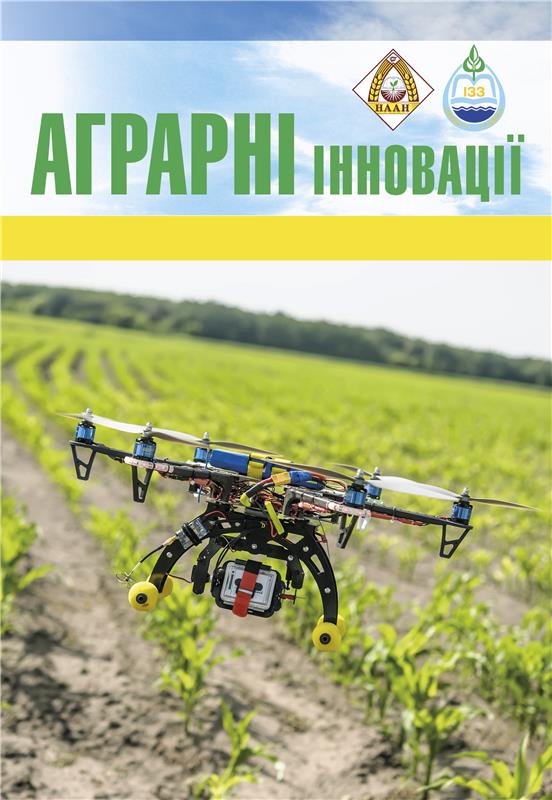PRODUCTION OF BUCKWHEAT: STATE, CHALLENGES, AND PROSPECTS
Abstract
Purpose. To analyze the current state of buckwheat production in Ukraine, different regions of the world, and leading producing countries, as well as to identify the challenges and prospects for developing this valuable cereal and honey plant. Methods. Comparative-analytical method – to identify patterns of the studied characteristics based on collected statistical data; graphic method – using graphical illustrations to visualize research results and represent specific patterns; abstract-logical method – to formulate theoretical generalizations, theories, hypotheses, conclusions, and practical recommendations. The informational basis of the research consisted of statistical data from the FAOSTAT database, scientific information from literary sources, results of own analytical studies, and calculations performed. Results. The global area of buckwheat cultivation significantly fluctuates from year to year. Since 2002, there has been a substantial reduction in these areas.Buckwheat is grown in all regions of the world except for the countries of Oceania. The most significant cultivation areas are concentrated in Europe, accounting for 56.1% of the global figure from 2000 to 2023. Asia ranks second with a share of 37.8%. The areas allocated for buckwheat cultivation are minimal in the Americas and Africa. 82.2% of the sown area for buckwheat is concentrated in just three countries: Russia, China, and Ukraine. These same countries also account for this crop's most enormous gross yields.There is a clear trend of gradual growth in buckwheat production volumes in all regions of the world, except for Asia, where a decline occurred from 2011 to 2020, affecting globalindicators. The buckwheat production volumes decreased from 2011 to 2020, compared to 2000 to 2010, in Ukraine and China. In Russia, gross crop yields increased, but this was due to an expansion in sown areas. In terms of yield, Russia lags behind both Ukraine and China. According to average data from 2000 to 2023, the yield of buckwheat in Russia was 0.88 t/ha, in China it was 0.93 t/ha, and in Ukraine it was 0.96 t/ha. Since 2010, Ukraine has consistently outperformed Russia regarding yield, except for the unfavorable weather conditions in 2017. The maximum yield of the crop in Ukraine was achieved in 2023 – 1.42 t/ha. Despite the small sown areas, the highest productivity of buckwheat is consistently demonstrated by the countries of the Americas from year to year. This indicates a significant potential for Ukraine to further develop buckwheat production and highlights the necessity for continuous improvement of agricultural technologies for growing this cereal crop. Conclusions. The most significant areas of buckwheat cultivation and production volumes are concentrated in Europe, with the leading countries in production being Russia, China, and Ukraine. Our country demonstrates growth in sown areas, yield, and gross harvests despite the challenging conditions of war. In Ukraine, buckwheat yield has significantly increased since 2013, reaching record levels in 2023. This highlights the importance of the crop for the agricultural sector and its potential in the international market. Stable production and improvement of farming technologies can strengthen Ukraine's position as one of the leading producers of cereal crops.
References
2. Luthar Z., Golob A., Germ M., Vombergar B., Kreft I. Tartary buckwheat in human nutrition. Plants. 2021. Vol. 10(4). Р. 700. DOI: https://doi.org/10.3390/ plants10040700
3. Averchev O. V., Kyrylov Yu. E., Fesenko G. A. The current state of buckwheat market in Ukraine. Bulletin Of National Academy Of Sciences Of The Republic Of Kazakhstan. 2021. Vol. 2(390). P. 113–119. DOI: https:// doi.org/10.32014/2021.2518-1467.58
4. Zhang W., Boateng I. D., Xu J., Zhang Y. Proteins from Legumes, Cereals, and Pseudo-Cereals: Composition, Modification, Bioactivities, and Applications. Foods. 2024. Vol. 13(13). Р. 1974. DOI: https://doi.org/10.3390/ foods13131974
5. Hemp and buckwheat are valuable sources of dietary amino acids, beneficially modulating gastrointestinal hormones and promoting satiety in healthy volunteers / М. Neacsu et al. European journal of nutrition. 2022. Vol. 61. Р. 1057–1072. DOI: https://link.springer.com/ article/10.1007/s00394-021-02711-z
6. Systematic review of human and animal evidence on the role of buckwheat consumption on gastrointestinal health / Е. Valido et al. Nutrients. 2022. Vol. 15(1). Р. 1. DOI: https://doi.org/10.3390/nu15010001
7. Tartary buckwheat: An under-utilized edible and medicinal herb for food and nutritional security / J. Ruan et al. Food Reviews International. 2022. Vol. 38(4). Р. 440–454. DOI: https://doi.org/10.1080/87559129.20 20.1734610
8. Nutritional and bioactive characteristics of buckwheat, and its potential for developing gluten-free products: An updated overview / S. A. Sofi et al. Food Science & Nutrition. 2023. Vol. 11(5). Р. 2256–2276. DOI: https:// doi.org/10.1002/fsn3.3166
9. Evaluation of a plant-based infant formula containing almonds and buckwheat on gut microbiota composition, intestine morphology, metabolic and immune markers in a neonatal piglet model / М. Gurung et al. Nutrients. 2023. Vol. 15(2). Р. 383. DOI: https://doi.org/10.3390/ nu15020383
10. Medicinal properties of buckwheat products and honey in compliance with food safety regulatory requirements / V. Popović et al. Journal of Agricultural, Food and Environmental Sciences. 2022. Vol. 76(3). Р. 16–24.
11. Fijen T. P., van Bodegraven V., Lucassen F. Limited honeybee hive placement balances the trade-off between biodiversity conservation and crop yield of buckwheat cultivation. Basic and Applied Ecology. 2022. Vol. 65. Р. 28–38. DOI: https://doi.org/10.1016/j. baae.2022.09.003
12. Pocienė O., Šlinkšienė R. Studies on the possibilities of processing buckwheat husks and ash in the production of environmentally friendly fertilizers. Agriculture. 2022. Vol. 12(2). Р. 193. DOI: https://doi.org/10.3390/ agriculture12020193
13. Vieites-Álvarez Y., Reigosa M. J., Sánchez- Moreiras A. M. A decade of advances in the study of buckwheat for organic farming and agroecology (2013–2023). Frontiers in Plant Science. 2024. Vol. 15. Р. 1354672. DOI: https://doi.org/10.3389/ fpls.2024.1354672
14. Official site of Food and Agriculture Organization of the United Nations : веб-сайт. URL: https://www.fao.org/ home/en (дата звернення: 20.01.2025).
15. Квасніцька Л. С., Тимощук Т. М. Продуктивність гречки у короткоротаційних сівозмінах Правобережного Лісостепу. Наукові горизонти. 2018. № 7–8 (70). С. 83–90.






